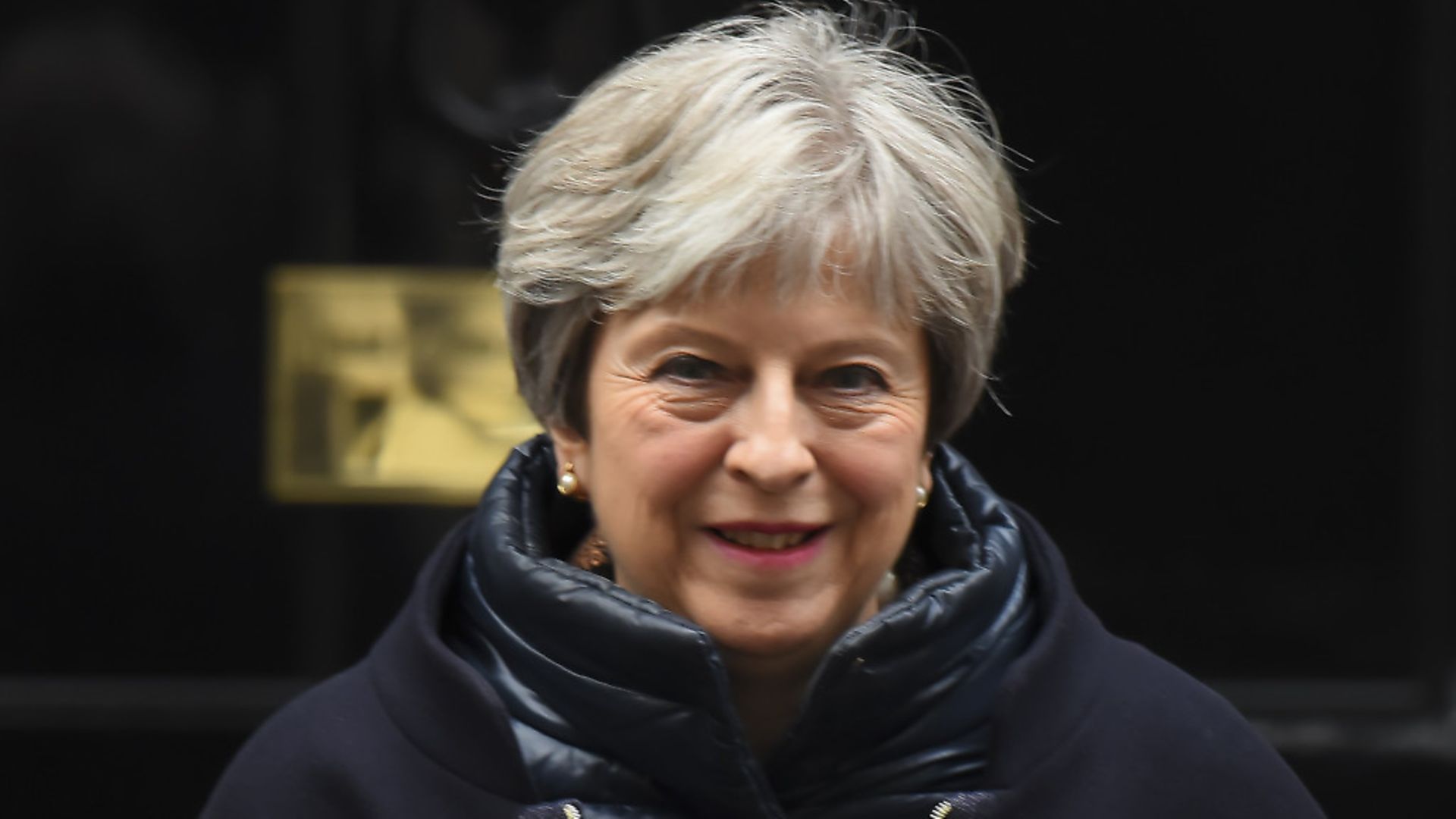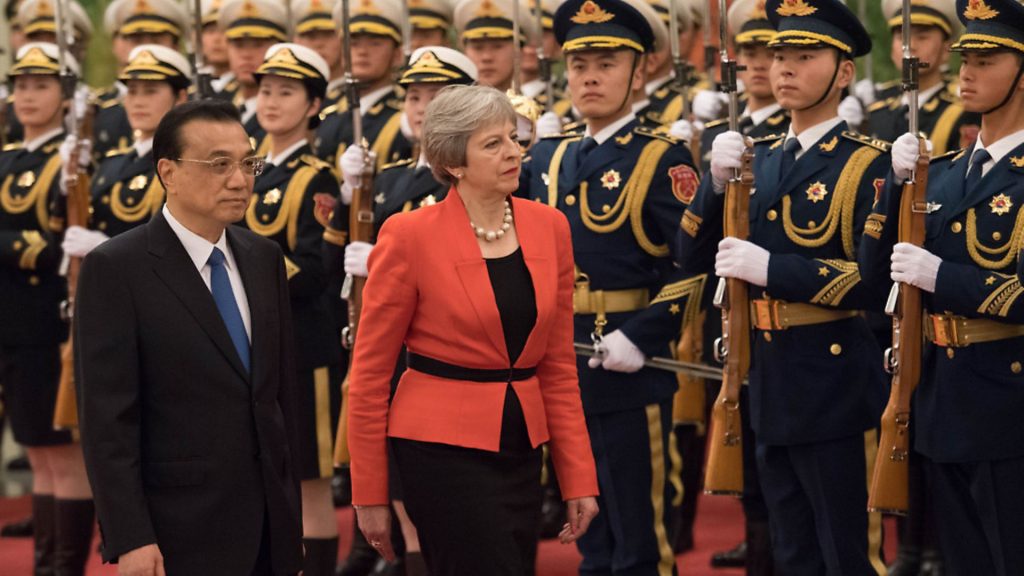
The Tories are once again in turmoil as open warfare breaks out over Brexit – can Theresa May survive?

When Theresa May stood for leader of the Conservative Party and Prime Minister, power rushed to her – thanks, in no small part, to her rivals’ weaknesses.
Now, at the most critical moment of her 18-month premiership, that same power ebbs away from her at a similar speed. The Prime Minister has been weak for months, due to the uncertainty of Brexit and her disastrous decision to call an early election. But events of the last few days suggest May’s leadership is now in an unstoppable death spiral. Her personal Doomsday Clock has moved closer to midnight.
The PM ended 2017 on a surprising high: just before Christmas, the first stage of Brexit negotiations was completed and a Cabinet Office inquiry had concluded that her deputy, Damian Green, had lied about pornography on his Commons computer – making it clear she had to accept his resignation. An inconclusive report would have left her open to the charge that she was not getting tough on harassment. On the surface at least, May appeared to have mastered two of the biggest challenges facing her government – Brexit and sexual harassment allegations.
Yet a month on, May’s grip on power is at its most precarious since she walked into Downing Street in July 2016. While away on her three-day visit to China this week, with the perspective that thousands of miles brings, she could have been forgiven for wondering why things fell apart so quickly.
In reality, her triumphant end to 2017 was always going to be short-lived, because of her underlying weakness as Prime Minister. There are two areas from which any Prime Minister can traditionally gain personal strength through displays of power: a Cabinet reshuffle and high profile foreign trips. The start of this year saw her faltering on both.
The reshuffle went badly because she could not get her own way on a number of big ministerial moves; on other appointments, she seemed indecisive, while she was unable to change personnel at any of the most senior roles. And on the world stage – a place where, in the past, premiers have sought to look statesmanlike in a bid to get away from troubles back at home – May’s share price fell. In Davos, Piers Morgan secured a (sort of) apology from Donald Trump over his retweeting of Britain First, something the PM has not been able to achieve. The New York Times reported that her speech to the World Economic Forum was sparsely attended, while Angela Merkel, in some very undiplomatic – but brutally accurate – comments to journalists in Davos, ridiculed May’s negotiating tactics on Brexit.
The PM’s visit to China this week was long-delayed, but it was also a risk to be away from Westminster while MPs from all wings of her party were questioning her ability to lead. It would be easy to contain a growing rebellion from pro-Brexit MPs, or ardent Remainers, but not both. Leavers like Jacob Rees-Mogg and other members of the European Research Group openly attack her Chancellor Philip Hammond and warn that the Prime Minister is taking the UK towards ‘BINO’ – Brexit In All But Name. For his part, Hammond continues to undermine May by setting his own course for a soft Brexit. Then there are the increasingly outspoken backbenchers who question where the Prime Minister is taking the Conservative Party and the country, demanding more creative policy ideas from Number 10: Nick Boles, Sir Nicholas Soames, Robert Halfon and Johnny Mercer. It is not hard to imagine that Sir Graham Brady, the chairman of the 1922 committee, has close to the 48 names of MPs required to trigger a confidence vote in May’s leadership.
Because those letters from MPs are so closely guarded – only Sir Graham knows how many there are – it is not clear whether May faces a leadership challenge within days, weeks or months. However, Westminster doesn’t need to see the number of letters to know how serious May’s leadership crisis is. Tory donors want her to quit after a trade deal is negotiated with the European Union this autumn. The catalyst could come sooner than that: if the Conservatives perform badly at the local elections this May.
And it always comes down to the voters – after all, the PM’s problems and underlying weaknesses are due to the lack of her mandate with the public, thrown away at last year’s General Election. In the Conservative Party, she never won the decisive mandate of her MPs and members, because the July 2016 leadership election never happened. May was the default leader, rather than the active choice, because her rivals all faded from the race. That lack of resolution has reverberated throughout the party to this day. She and her ministers have consistently underestimated the staying power of Jeremy Corbyn, who, despite confusion over his own Brexit position, has kept Labour’s position high in the polls.
But there is another, inescapable factor which makes the job of Prime Minister harder for May. It is, of course, Europe. Like her three Conservative predecessors in Number 10, May could be yet another Tory Prime Minister undone by the EU. Europe – or rather, Euroscepticsm – is a wild animal that Conservative leaders have tried, and failed, to tame. It is bigger than any of the Prime Ministers who have been forced to resign because of it. It is the fox in the Tory hen house, sending Conservative MPs into chaos and madness before eating them alive. Like Margaret Thatcher, John Major and David Cameron before her, if May quits before the next election, it will be ultimately because of Europe.
The Prime Minister believed she had tamed the Eurosceptic beast in her Lancaster House speech, a little over a year ago, when she delivered what the Brexiteers still see as the blueprint for the UK’s departure – out of the single market, a hard Brexit and that no deal would be better than a bad deal. Her mastery of this wild animal continued up until April, when she called a snap election declaring, in one of the most hubristic speeches ever delivered by a PM outside Number 10, that dissenters were undermining the government’s attempts to secure a Brexit deal.
The election was May’s undoing because it exposed her lack of authority and poorly constructed manifesto pledges. The election allowed the Eurosceptic fox to go on the rampage once again.
When he ran for leader in 2005, Cameron painted himself as a moderniser who could put Tory turmoil over Europe behind the party. Yet in the closing stages of that contest, in what must have seemed at the time a quick and easy grab at power, Cameron made a deal with the Eurosceptic right, who supported another contender, Liam Fox. Part of the deal involved Cameron pledging to take Conservative MEPs out of the mainstream centre right grouping in the EU, the European People’s Party, and form a new alliance – later named as the European Conservatives and Reformists. It didn’t seem like a huge concession, yet it gave Eurosceptics more power and, ultimately, led Cameron to pledge a referendum on EU membership. After giving too much ground to the Eurosceptic beast, Cameron thought he could keep Britain in the EU by persuading the country not to fall for a romanticised version of Euroscepticsm. Everyone knows how that story ended.
May risks repeating the mistakes of her predecessor. When she was at her most powerful – days after becoming Prime Minister – she immediately ceded some of that power by making two arch-Brexiteers, Boris Johnson and David Davis, Foreign Secretary and Brexit Secretary, while sacking the arch-Remainer George Osborne. The sacrificing of Osborne gave succour to the Leave side. From the start of her premiership, she failed to give clarity on what Brexit would look like – only that ‘Brexit means Brexit’ and that she would make a success of it. In this vacuum, the Brexiteers gained more ground, pushing for a hard Brexit – despite the insistence, during the referendum campaign, that Britain would not have to leave the single market.
Brussels has been at the same time both dismayed and bemused at how the British government has handled the Brexit talks. Merkel’s ridiculing of May in Davos went to the heart of the PM’s poor negotiating hand: the German Chancellor claimed May’s favourite line was ‘make me an offer’, when it is clear for all of Europe to see that Britain is leaving, and has very little leverage to make demands.
Supporters of May say that prime ministers always go through difficult patches, that the media is always talking up leadership crises that never materialise. They point to the moment after the Grenfell Tower disaster last June when the local community turned on the PM as she tried to visit, and that many commentators wrongly predicted she would be gone within days.
However, one Tory backbencher who is not one of the ‘usual suspects’ of disgruntled MPs said the mood this time felt very different. He said: ‘It is difficult to see how she gets out of this. People from all sides are unhappy. We can obsess about Brexit and then remember we don’t have a real majority and then look ahead to the local elections and just see disaster under her leadership.’ Conservative MPs have been testing the boundaries of May’s authority and found it easy to question her leadership. Mercer, seen as a future leadership contender, summed up the mood of the party when he said earlier this week that the ‘window is closing’ on her reign. It seems like it would take one mishap, or push, for May to go.
In contrast to this time last year, when the PM walked through the White House garden hand in hand with the US president, she cannot now look to Trump for solid support. Relations have cooled between the two leaders, as was clear when they met in Davos last week. There is a lot of nervousness about the non-state visit that he will make this summer: not least because Trump, who is ultimately a power-celebrity, can tell when a fellow political leader is on his – or her – way out.
At least May’s predecessors, from both parties, have been able to gather loyal allies close at their most dangerous moments. Yet she has been let down by the fallibilities and personal shortcomings of those closest to her. Fiona Cunningham and Nick Timothy were forced to quit as her joint chiefs of staff in the wake of the election after anger over their hardline style at Number 10. Green went under a cloud of sexual harassment allegations, and now Gavin Williamson, another political ally, faces questions over his conduct involving a woman while working at a fireplace firm more than a decade ago.
If it were not for Brexit, and the Eurosceptic fox that now runs free throughout the Conservative Party, the Prime Minister might be able to overcome other Cabinet crises. But after the leaking of the government’s assessments of the damage that Brexit will do to the economy, May now has to convince voters she is not going to drive the UK into economic disaster. Of course, the rampant Brexiteers claim that these Treasury analyses are way off, because they are so distrustful of ‘experts’, and are now using the leak to push for a faster Brexit. The Prime Minister, like the wider Conservative Party, will never be free of the Eurosceptic beast.
• Jane Merrick is a freelance journalist and columnist; follow her @janemerrick23
Warning: Illegal string offset 'link_id' in /mnt/storage/stage/www/wp-includes/bookmark.php on line 357
Notice: Trying to get property 'link_id' of non-object in /mnt/storage/stage/www/wp-includes/bookmark.php on line 37






